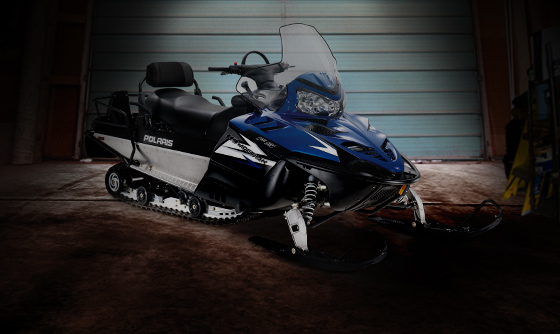
No matter how sad you are when the ice goes out, don’t cry on your snowmobile before storing it away. Those salty tears could damage essential parts.
We’re kidding about the tears, of course — but not about the salt. Nor are we kidding about the need to properly prepare your snow machine for storage following the spring melt — a sad time indeed for ice anglers and other winter-recreation enthusiasts, as spoofed in this video on the Polaris youtube channel.
“There comes that sad part of the year we gotta to put one away,” Polaris Tech Trainer Kurt Saler tells dejected Snocross star Levi LaVallee in the video.
“But I don’t want to,” says LaVallee, acting the part of the diehard who can’t accept the season’s end.
“But it’s gotta be done,” Saler says. “And it’s pretty simple, actually.”
Whether you use your Polaris snocross jumping for prizes or hole hopping for walleyes, you’ll want to follow a few preventative measures before storing it over the off-season. Do so, and you’ll ensure tip-top performance next winter.
While salty tears might not actually pose a risk to your snowmobile, road salt can cause damage.
“We want to make sure the whole machine’s clean,” Saler says. “Primarily all of our front-end pivot points, [like] shock shafts … including even the tunnel area, because of salt from the road.”
Start with soapy water. Scrub down your hood, side panels, chassis, and any other plastic parts, looking specifically for salt residue and other corrosive elements. Then use a damp cloth or rag to wipe down all remaining surfaces. Finish by spraying metal components with WD-40 or another penetrating oil.
“The other thing we want to do too is grease all the suspension joints,” Saler says.
Saler recommends adding both Pure Polaris Fuel Stabilizer and Pure Polaris Carbon Clean to your snow machine’s tank. “We always want to make sure we treat our fuel,” he says. The aforementioned products are the best, he advises. Follow instructions on the bottles, then top off with fresh fuel.
Preventing rust and corrosion on precision engine parts during storage is vital to ensuring the longevity of your engine and fuel system.
The engine of any snowmobile stored for more than 60 days should be fogged.
“To preserve the engine, we’re going to use a chemical called fogging oil,” Saler says. “This is sprayed through the intake system.”
Fogging creates a thin layer of oil that protects rod pins, cylinder walls and crankshaft bearings from humidity, which can corrode parts quickly. Proper fogging will prevent crankshaft failure. Follow instructions provided on your oil container.
Before storage, remove your Polaris’ drive belt and store it in a cool, dry, flat spot. “Because the belt will take pre-set for that long storage of three, four months,” Saler says.
Moderate track tension should be maintained during summer storage. Your snowmobile should be supported off the ground to allow the track to hang freely.
Prior to storage, charge your battery to full charge. Check battery voltage every three months and re-charge as required. If possible, place the battery on a voltage-regulated charger to maintain proper voltage.
Replace worn or frayed electrical wire and connectors. Be sure your wiring harness is properly secured away from sharp edges, steering linkage, moving parts, and hot exhaust parts.
Store your Polaris in a dry garage or shed, out of direct sunlight, and covered with a fabric snowmobile cover. A plastic tarp may cause condensation to form and damage snowmobile components.